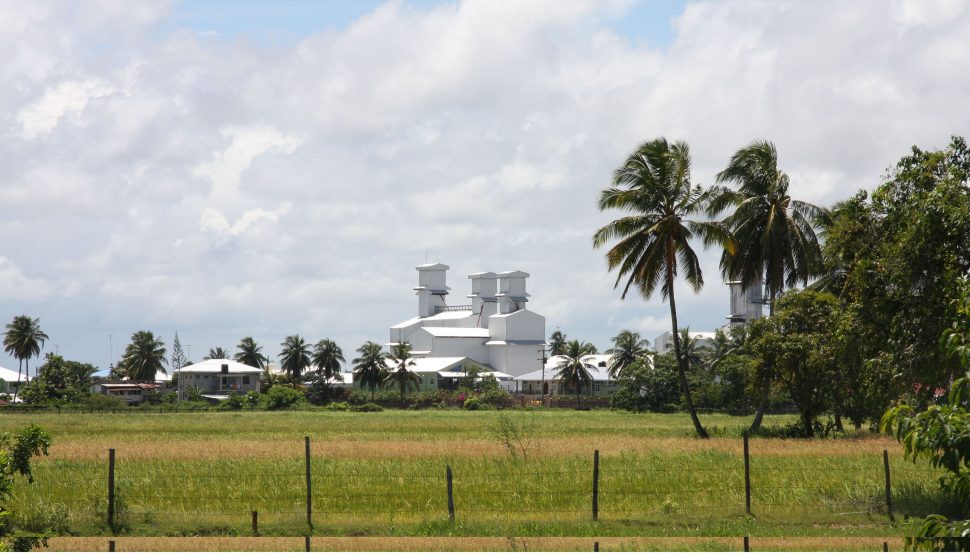Seemingly seeking to heed the persistent warning that Guyana should not allow the advent of oil and gas to result in a neglect, or worse, a wholescale abandonment of those sectors that have historically sustained the country’s economy, the APNU+AFC coalition administration this week used the presentation of its budgetary proposals for 2019 to set out plans for what it says is “production, transformation and agricultural transformation” which, it is envisaged, will coexist with the historic move with the recovery of ‘first oil’ in 2020.
Even as his 2020 budget presentation offered glimpses of some of government’s plans for preparing for the commencement of oil recovery, Finance Minister Winston Jordan insisted that the flow of oil and the early anticipated of returns therefrom notwithstanding, traditional agriculture “will continue to be one of the main pillars of our economic development,” a pronouncement intended to provide some measure of assurance to both food safety advocates and investors in the sector, even as the nation, understandably, drifts into fantasy over the fast approaching advent of ‘first oil.’
Going forward, however, Jordan told the nation that more than half a century of overwhelming reliance on “a limited range of primary products” will be replaced with the opening of new frontiers for “plantation agriculture,” with a particular focus on crops such as corn, soya, quinoa, orchards of fruit and vegetables, livestock and fisheries. The launch of these “new frontiers,” Jordan said, is being supported by a budgetary allocation of $17.1 billion to the agriculture sector next year.
Spending on agriculture in 2019, according to the Finance Minister, will focus on food safety and security while seeking to break new ground in “productivity, new value chains, and value added industries” designed to boost investments in agro processing and institutional capacity.
And on the back of the challenges which the country’s long suffering rice industry has faced in recent years, Jordan announced that government will be ‘recruiting’ the services of the high profile Malaysian Agricultural Research and Development Institute to help the local sector raise its game. He announced that Guyana will work with the Institute to test three new high-yielding, pest and disease-resistant varieties of rice for introduction in Guyana with the aim of increasing local yield up to 5% per annum over the next three years. The project allows for the involvement of 1,500 rice farmers and 10 millers in an initiative which the Finance Minister will provide them with knowledge and skills in breeding and certified seed production. The collaborative programme with the Malaysian Institute is also targeting the creation of three new rice-based, value-added products, pre-gelatinized rice powder, rice pasta and rice chiffon cakes, all products that target the enhancement of the nutrition base of the elderly population.
Beyond initiatives to boost the rice sector Jordan disclosed in his budget presentation that government’s pursuit of diversification in the country’s agricultural sector will also be supported by the setting up of a state-of-the-art abattoir at Onverwagt on the West Coast Berbice, next year, an initiative that takes aim at “the reduction in the importation of meat and the realization of Guyana’s compliance with international standards for meat-processing.” Simultaneously, the Finance Minister disclosed that discussions are underway with the Islamic Development Bank to create a ‘reverse linkage project” in livestock and Halaal meat designed to realise improved livestock breeds in the country’s beef stocks.
Next year, according to Jordan, government will move to conduct a feasibility study preparatory to the establishment of a dairy value chain through the supply of improved breeding stock to farmers, milk chilling stations and refrigerated trucks to supply fresh ,milk to a new milk plant to be set up at Diamond, on the East Bank Demerara.
Upper reaches
Government’s plans for an intensification of its agricultural programme next year will, according to the Finance Minister, embrace the country’s intermediate savannahs and the upper reaches of riverain regions, the primary focus in that regard being the setting up of a modern $220 million research facility at Ebini to serve as “a developmental institution for orchards, nurseries, and seed production as well as for breeding herds of cattle and small ruminants.” These, it is envisaged, will provide stock for farmers and investors, the initiative intended to support the objective of “bridging the hinterland and coast by re-distributing economic activities inland while complementing other economic activities such as forestry, mining and other support services.”
Other initiatives designed to boost hinterland agriculture and agro processing in hinterland regions will, the Finance Minister says, include the establishment of a food-processing facility in Region One as well as an additional water reservoir for water harvesting. Developments relating to the consolidation of agriculture will also see the rearing of Black Giant poultry a breed capable of producing up to two hundred eggs annually and about 4.5 kilogrammes of meat. Next year will also witness a buildout of infrastructure for shadehouse farming in Regions 7, 8 and 10.
Envisaged increased investment in improving the country’s drainage and irrigation structures, access dams and farmlands in response to growing climate change concerns will include persistence with the rehabilitation of drainage and irrigation systems and access dams undertaken in various coastal communities including Ithaca, Buxton, Triumph and Mocha during this year and which Jordan says will impact more than 100 farming households by providing easier access to farmlands. Contextually, the Finance Minister announced that government will secure funding from India and obtain twelve high capacity drainage pumps for Regions 2,3,4,5 and six next year.
Government has also allocated $100 million to protect the country’s mangrove forests, regarded as an important defence against rising sea and ocean levels.
And according to Jordan, 2019 will witness increased public/private sector collaboration in a push to further grow the country’s agro-processing sector and to expand production and improve competitiveness. In this regard, Jordan announced that the New Guyana Marketing Corporation, which is already playing a role in supporting the promotion of locally made agro produce (see related story in this issue of the Stabroek Business) will expand its marketing services by extending new services to support small agro-processors by providing “guidance on acceptable practices, capacity building and access to packaging materials”.
Attention to the development of small business initiatives, meanwhile, will also be supported through the allocation of $100 million for the Small Business Bureau next year, the allocation of $71.3 million for the upgrading of the Guyana National Bureau of Standards’ (GNBS) testing laboratory, the establishment of an agro processing facility at the Guyana School of Agriculture in Region Two with an investment of $37.5 million and another similar facility in Region One with an investment of $20 million.
Meanwhile, government’s proposals for the fisheries sector next year include the upgrading of the technical capacity of the Fisheries Department in the collection and analysis of data and the monitoring and surveillance of fisheries operations. Next year, according to Jordan, will also see the training of farmers in improved aquaculture practices a facet of which will be exposure to related technology. Proposals for the advancement of the fisheries sector in 2019 also impact marine fishing through “the strengthening of systems to ensure improved quality of fish and fish products exported, regulated fishing, sustainable fishing practices and improved data collection.”









